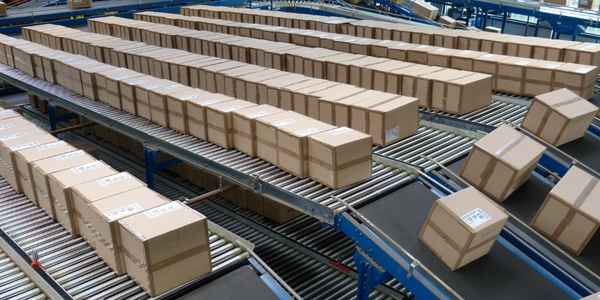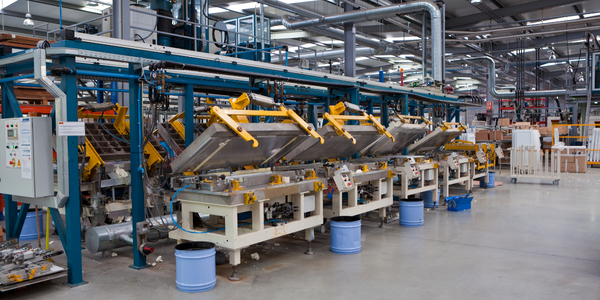Technology Category
- Platform as a Service (PaaS) - Application Development Platforms
Applicable Functions
- Procurement
Use Cases
- Root Cause Analysis & Diagnosis
- Time Sensitive Networking
Services
- System Integration
About The Customer
Peoplebank is Australia’s largest information technology recruitment company, specialising in the permanent and contract placement of IT&T professionals across all industries since 1990. With a national network of offices in Adelaide, Brisbane, Canberra, Melbourne, Perth, and Sydney, as well as international offices in Hong Kong, Singapore, and Malaysia, Peoplebank places over 6,000 candidates every year. The company's mission is to continue to gain efficiencies and grow operations across the APAC region, with the creation of measurable and replicable processes being a key priority.
The Challenge
Peoplebank, Australia’s largest information technology recruitment company, was facing significant challenges with its legacy system. The system was slow, inefficient, and lacked scalability, causing recruiters to experience lag times of 3-4 seconds per request, which significantly slowed down workflow. The system was not integrated, forcing recruiters to use multiple platforms, which proved to be highly inefficient. Recruiters also wasted valuable time on manual tasks like entering placement data. The company needed a system that could be automated and customised to its needs, and that could support its growth in the APAC region.
The Solution
Peoplebank chose Bullhorn as its comprehensive CRM, ATS, and collaboration solution. Bullhorn provided a single holistic system that incorporated all of Peoplebank’s internal functions to streamline workflow and save time. Manual tasks became automated, decreasing error rates and improving data integrity. Bullhorn also gave Peoplebank new reporting capabilities, giving the company granular insight into its internal operations and connecting international offices after expansions. The system was extremely responsive, resulting in incremental time savings and an efficiency improvement of 300%. Forced fields and intelligent customisation improved data integrity, removing duplicate entries and resulting in 7 times less errors.
Operational Impact
Quantitative Benefit

Case Study missing?
Start adding your own!
Register with your work email and create a new case study profile for your business.
Related Case Studies.

Case Study
Aircraft Predictive Maintenance and Workflow Optimization
First, aircraft manufacturer have trouble monitoring the health of aircraft systems with health prognostics and deliver predictive maintenance insights. Second, aircraft manufacturer wants a solution that can provide an in-context advisory and align job assignments to match technician experience and expertise.

Case Study
IoT Data Analytics Case Study - Packaging Films Manufacturer
The company manufactures packaging films on made to order or configure to order basis. Every order has a different set of requirements from the product characteristics perspective and hence requires machine’s settings to be adjusted accordingly. If the film quality does not meet the required standards, the degraded quality impacts customer delivery causes customer dissatisfaction and results in lower margins. The biggest challenge was to identify the real root cause and devise a remedy for that.

Case Study
Large Oil Producer Leverages Advanced Analytics Platform
Approximately 17,000 wells in the customer's portfolio have beam pump artificial lift technology. While beam pump technology is relatively inexpensive compared to other artificial lift technology, beam pumps fail frequently, at rates ranging from 66% to 95% per year. Unexpected failures result in weeks of lost production, emergency maintenance expenses, and costly equipment replacements.

Case Study
The Internet of Trains
Train operators the world over are expected to work miracles, i.e. never to be late. So, with acute service and availability targets to meet, an efficient maintenance program is important. And data-enabled functionality is a must for Siemens. Reactive maintenance (after an incident) and routine, preventive maintenance with its visual inspections and scheduled exchange of components, are no longer enough. We’ve moved on to more cost-effective, condition-based, predictive maintenance. The actual condition of components is measured via the transfer and remote monitoring of diagnostic sensor data; data which is also used to analyse patterns and trends. This helps predict when a component is likely to fail, so it can be repaired before anything untoward happens. To ensure the commercial sustainability of this approach, Siemens needs to use and re-use existing data, creating a kind of ‘Internet of Trains’. Towards this end, they’re analysing sensor data in near real time, which means they can react very quickly, ensuring that customer transport services aren’t interrupted. “It is really difficult to define every issue before it impacts operations using only data from the trains”, Kress explains. However, recent success stories prove that everything is possible.

Case Study
FMCG Case Study – CPG Line Monitoring
The leading CPG company operates several warehouses, mostly closer to the last distribution point (Large retailers). Products in various categories are packaged in specific delivery or display cartons at these facilities. As most CPG businesses consist of high volume with low margins, optimizing every operation and effective utilization of resources add up to profit margins. The key problem at these warehouses is the lack of visibility into reasons for machine breakdowns or idle time, thereby delay in delivery. The sunrise meetings lead to post-mortem of delivery issues like delay or quality. The customer wanted to implement real-time line monitoring and alert system to gain control over downtime issues and implement improvement measures.








